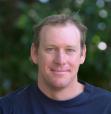
Showing 241 - 260 of 538 results
Better predictions of the working life of industrial components
A revised model has been developed that can more accurately predict the actual service life of an industrial component.
Nanoscale insights to improve organic solar cell thin films
A large international team has provided an understanding of how nanoscale interactions affect the thermal stability of a type of next generation organic solar cells.
Total Fluorine Analysis
ANSTO offers accelerator-based particle-induced gamma-ray emission techniques to determine total fluorine concentration in a range of solid materials and rapidly screen for the presence of PFAS (perfluoroalkyl and polyfluoroalkyl substances).

Nuclear medicine processing and distribution
ANSTO’s nuclear medicine processing and distribution facility assembles, loads, tests and distributes a range of nuclear medicine products, including Mo-99. The Mo-99 is dispensed into an ANSTO radiopharmaceutical Gentech® Generator where it decays to Tc-99m.

Amelia Iverson is a Community Facilitator with the new VH2 Hydrogen Hub at Swinburne.
Nobel Prizes recognise insights at molecular and atomic scale
The Nobel Prizes for Physics, Chemistry and Medicine have been announced.
Experts share knowledge of nuclear medicine in live online forum
ANSTO recently hosted a public Ask Us Anything event on nuclear medicine, sharing information on how we safely manufacture and distribute nuclear medicine across Australia each week to hundreds of hospitals and clinics.
Collaborative research brings new insights into radioactive waste, nuclear fuel and nuclear waste forms
ANSTO researchers have demonstrated longstanding expertise in the study of nuclear fuel and radioactive waste with two recent journal articles in a special issue of Frontiers of Chemistry.
ANSTO welcomes new Board Chair
ANSTO is pleased to welcome The Hon Dr Annabelle Bennett AO SC as the new ANSTO Board Chairperson, following the announcement from the Minister for Industry, Science and Technology.
Seeing into dinosaur bone
Australia’s best known carnivorous dinosaur Australovenator is under the microscope at ANSTO
After your experiment
Following your experiment at ANSTO there are certain tasks that users can complete including a user feedback survey and claiming reimbursement for travel expenses.

Role at ANSTO
Innovative technology provides enhancement to advanced radiation therapy
Neutron Capture Enhanced Particle Therapy developed at ANSTO.

FAQs
We have provided answers to some the frequently asked questions about the CORIS360® imaging technology.
Using light to understand disease

Sarah joined ANSTO in May as a part-time Marketing and Events Coordinator for the Nuclear Science and Technology group.

